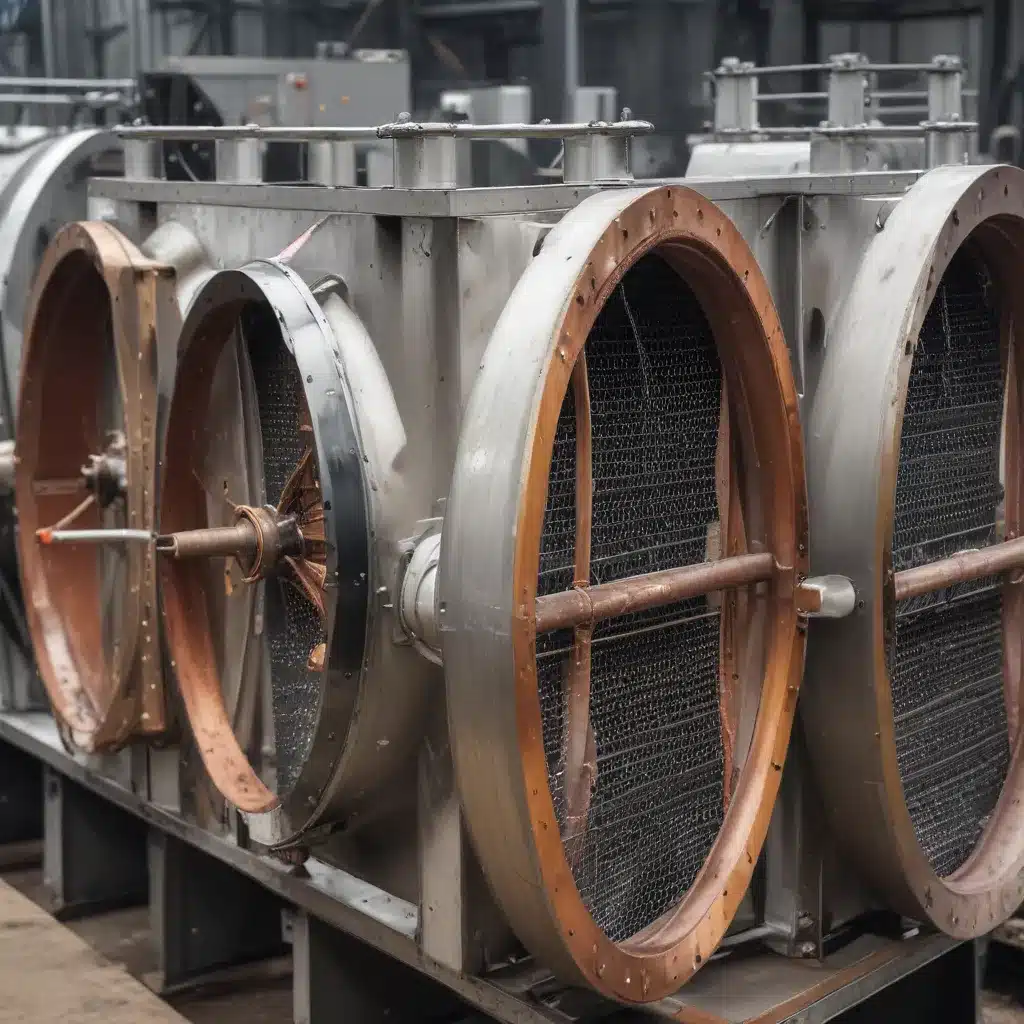
The Importance of Efficient Thermal Management in Steel and Metals Production
Thermal management is a critical aspect of steel and metals production, ensuring optimal process efficiency, product quality, and energy conservation. In this energy-intensive industry, air-cooled heat exchangers play a pivotal role in facilitating the transfer of thermal energy, enabling effective heating and cooling throughout various stages of the manufacturing cycle.
Designing and optimizing air-cooled heat exchanger systems for the steel and metals sector requires a deep understanding of the unique thermal challenges faced by these industries. From the need to withstand high temperatures and harsh operating conditions to the importance of minimizing energy consumption and environmental impact, heat exchanger technology must be carefully tailored to meet the exceptional demands of this dynamic landscape.
Understanding the Fundamentals of Air-Cooled Heat Exchangers
At the heart of an air-cooled heat exchanger is the principle of heat transfer, where thermal energy is exchanged between two fluids without direct mixing. In this process, a metal surface, typically made of aluminum or copper, acts as the conducting medium, facilitating the transfer of heat from the hotter fluid to the cooler one through conduction, convection, and radiation.
The design of an air-cooled heat exchanger typically includes finned tubes or plates, which maximize the surface area exposed to the cooling air, enhancing the efficiency of the heat transfer process. As the air circulates over the finned surfaces, it absorbs the thermal energy, effectively dissipating the heat and lowering the temperature of the process fluid.
Optimizing Air-Cooled Heat Exchanger Design for the Steel and Metals Industry
To achieve optimal thermal management in the steel and metals industry, air-cooled heat exchangers must be designed and engineered with the unique challenges of this sector in mind. Here are some key considerations for optimizing air-cooled heat exchanger performance:
Material Selection and Corrosion Resistance
The harsh operating environments common in steel and metals production, including exposure to high temperatures, aggressive chemicals, and corrosive byproducts, can quickly degrade heat exchanger materials. Carefully selecting the right materials, such as stainless steel, aluminum, or specialized alloys, is crucial to ensure the long-term durability and reliability of the heat exchanger.
Thermal Efficiency and Heat Transfer Optimization
Maximizing the heat transfer efficiency of air-cooled heat exchangers is essential for achieving optimal thermal management in steel and metals production. This can be accomplished through innovative design features, such as:
- Optimizing fin geometry and spacing to enhance air-side heat transfer coefficients
- Incorporating advanced heat transfer surfaces, like herringbone or louvered fins, to increase the effective surface area
- Utilizing high-performance materials with superior thermal conductivity, such as copper or specialized aluminum alloys
- Employing advanced computational fluid dynamics (CFD) modeling to identify and address potential hot spots or areas of poor heat dissipation
Maintenance and Fouling Mitigation
Maintaining the cleanliness and optimal performance of air-cooled heat exchangers is critical in the steel and metals industry, where fouling from dust, scale, or other contaminants can significantly impair heat transfer efficiency. Designing heat exchangers with features that facilitate easy cleaning and maintenance, such as removable end covers or access panels, can help minimize downtime and ensure consistent thermal management.
Energy Efficiency and Sustainability
As the steel and metals industry continues to focus on reducing its environmental impact, air-cooled heat exchanger design must also prioritize energy efficiency and sustainability. Strategies to achieve this include:
- Incorporating variable-speed fans or motors to match cooling capacity with dynamic process demands
- Utilizing advanced materials and manufacturing techniques to reduce the weight and material usage of heat exchangers
- Optimizing airflow patterns and fan configurations to minimize energy consumption while maintaining optimal thermal performance
Modularity and Scalability
The flexibility to adapt to changing production demands is crucial in the steel and metals industry. Air-cooled heat exchanger designs that offer modularity and scalability can provide plant operators with the ability to add or remove capacity as needed, ensuring efficient thermal management across a range of operating conditions.
Leveraging Industry Expertise for Optimal Performance
Achieving the highest levels of efficiency and reliability in air-cooled heat exchanger applications within the steel and metals industry often requires the guidance of experienced thermal management experts. Companies like https://www.aircooledheatexchangers.net/ specialize in providing customized solutions tailored to the unique needs of each customer, ensuring optimal thermal management and energy conservation.
By collaborating with industry-leading providers of air-cooled heat exchangers, steel and metals manufacturers can benefit from:
- Access to the latest advancements in heat exchanger technology and materials
- Personalized design and engineering services to address specific process requirements
- Comprehensive maintenance, repair, and troubleshooting support to maintain peak performance
- Insights into industry best practices and emerging trends in thermal management
Investing in partnerships with seasoned air-cooled heat exchanger experts can help steel and metals producers achieve unparalleled levels of efficiency, reliability, and sustainability in their thermal management operations.
Conclusion: Unlocking the Full Potential of Air-Cooled Heat Exchangers in the Steel and Metals Industry
As the steel and metals industry continues to face growing demands for improved energy efficiency, product quality, and environmental responsibility, the role of air-cooled heat exchangers in facilitating effective thermal management has become increasingly critical. By optimizing heat exchanger design, materials, and maintenance practices, steel and metals manufacturers can unlock significant improvements in their thermal management capabilities, leading to enhanced process efficiency, reduced energy consumption, and a more sustainable production footprint.
By partnering with industry-leading providers of air-cooled heat exchanger solutions, steel and metals producers can leverage the expertise and cutting-edge technology necessary to tackle their most pressing thermal challenges and stay ahead of the curve in this dynamic and competitive landscape.

